A FEW MORE FUNGI
7/31/20
Some hiking in the UGA Botanical Gardens a couple of weeks ago revealed several new fungi, a few of which I cannot identify.
Carrot-Footed Amanita (Amanita (sect. Lepidella) daucipes). This has a tan cap with concentric rings of scales. The gills are free of the stem, and there’s a prominent veil, which sometimes still clings to the edge of the cap. It apparently has a thick carrot-like root, which I must have clipped off when I uprooted this. I found this along our street in an oak-hickory forest.
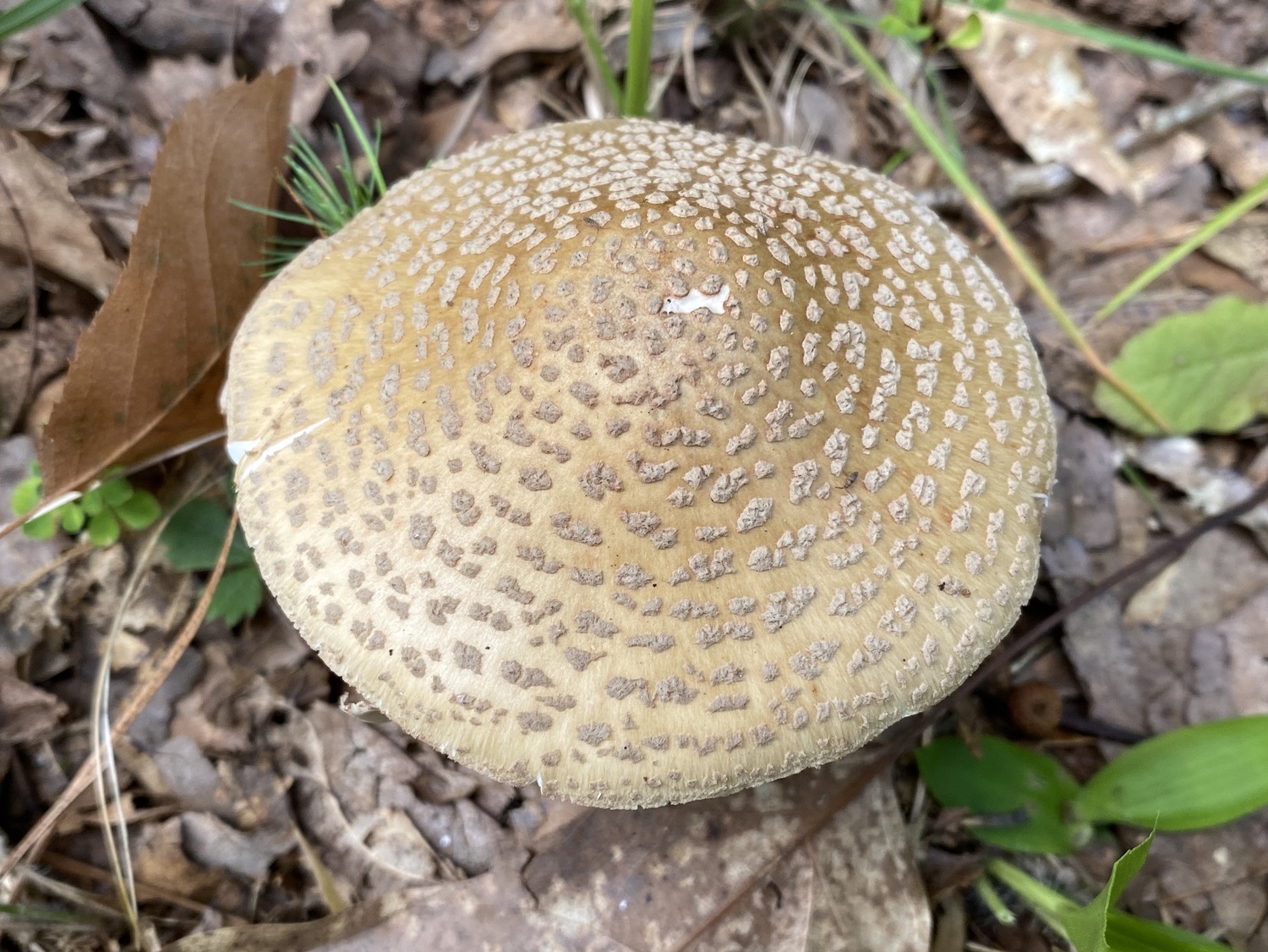
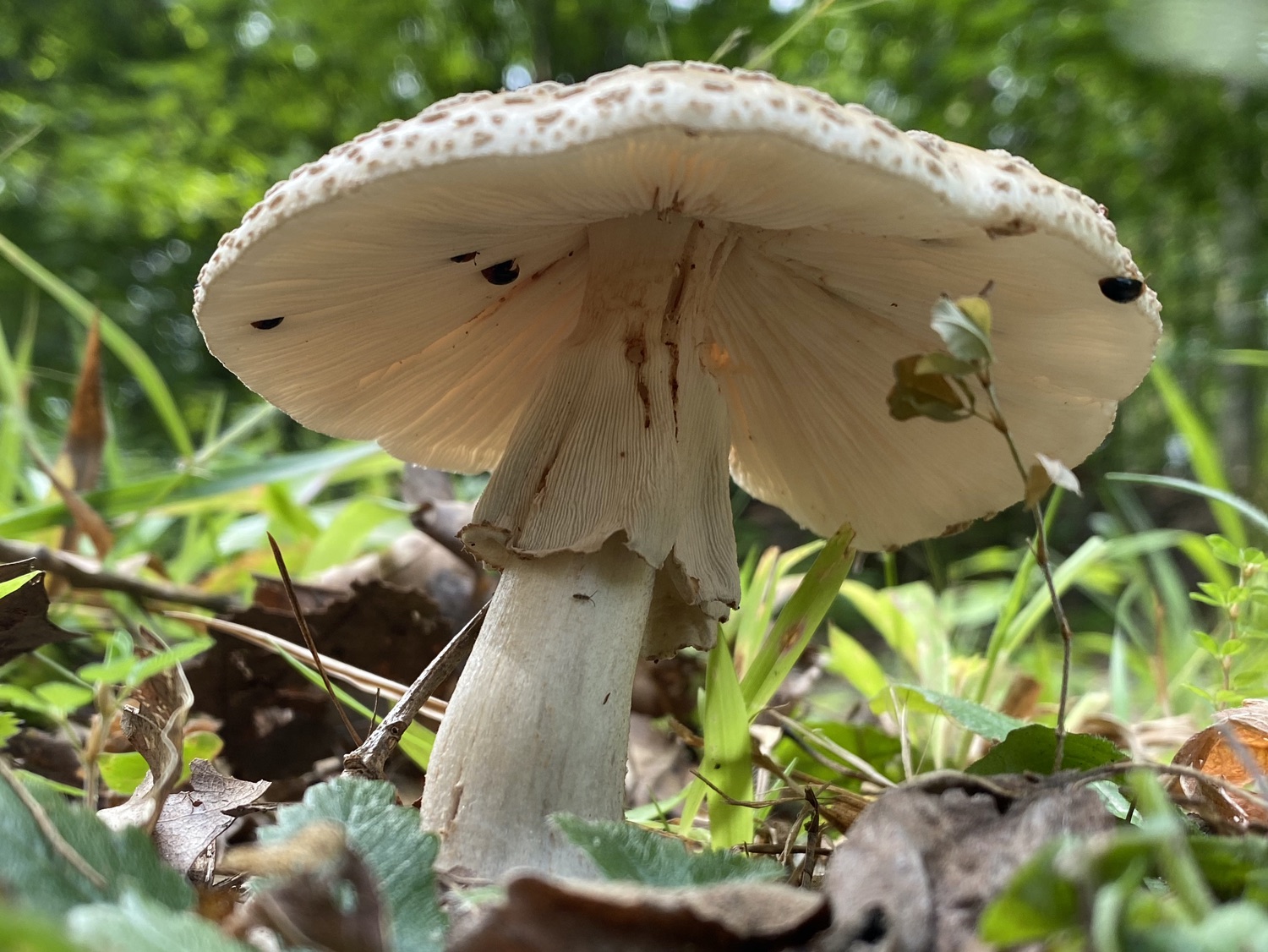


Golden-Pored Bolete (Aureoboletus auriporus). These have pinkish caps, with striking yellow pores on the underside. I found this along our street in an oak-hickory forest.

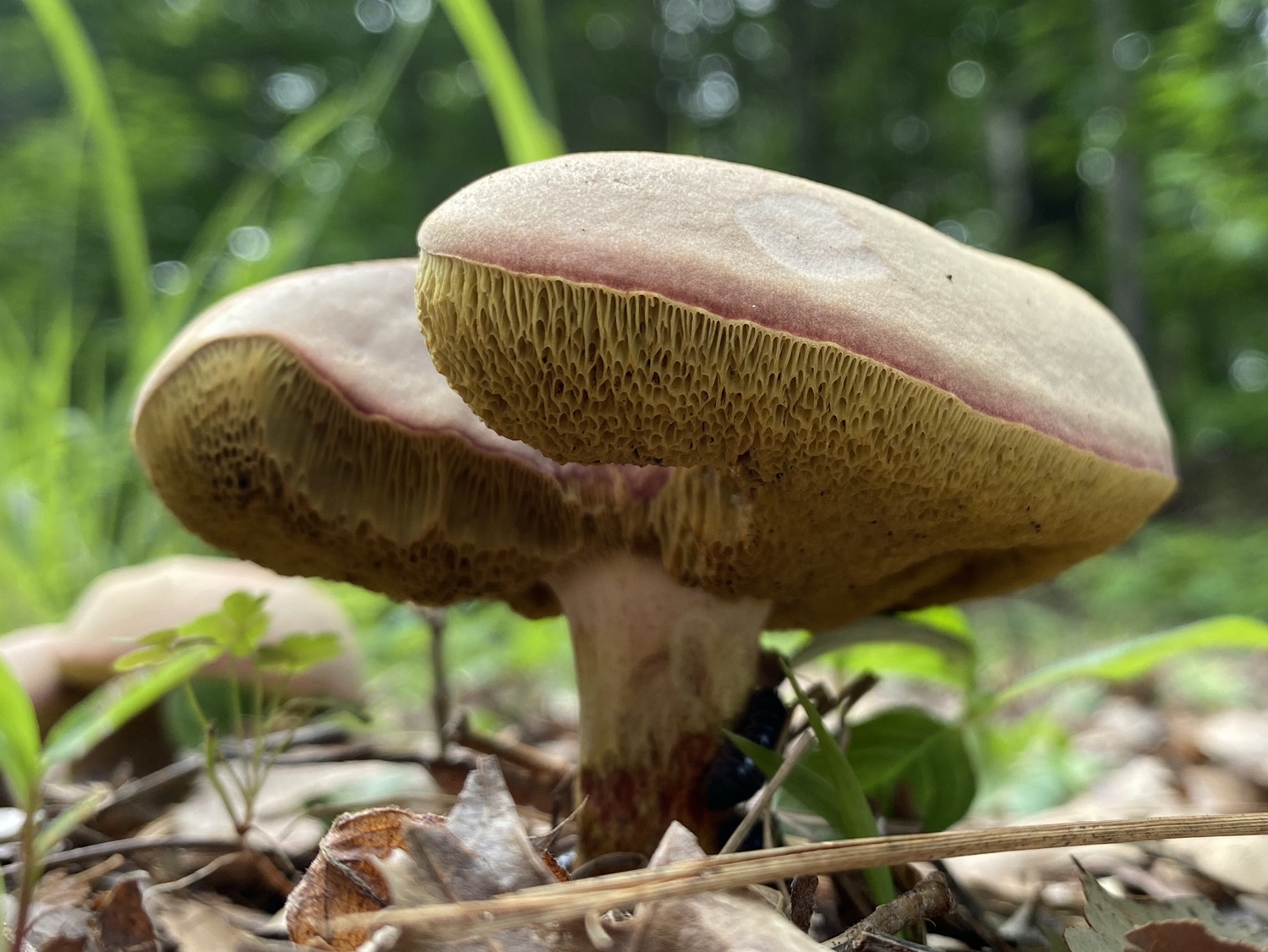
American Tawny Grisette (Amanita (sect. Vaginatae) aff. fulva). Species has a long and thin stalk that is smooth to somewhat scaly, with the numerous gills of an Amanita. The cap is orangish-brown in the center, becoming paler towards the edges; the gills are visible through the cap near the edges. I found this in a pine-oak forest on the White Trail in the UGA Botanical Gardens.
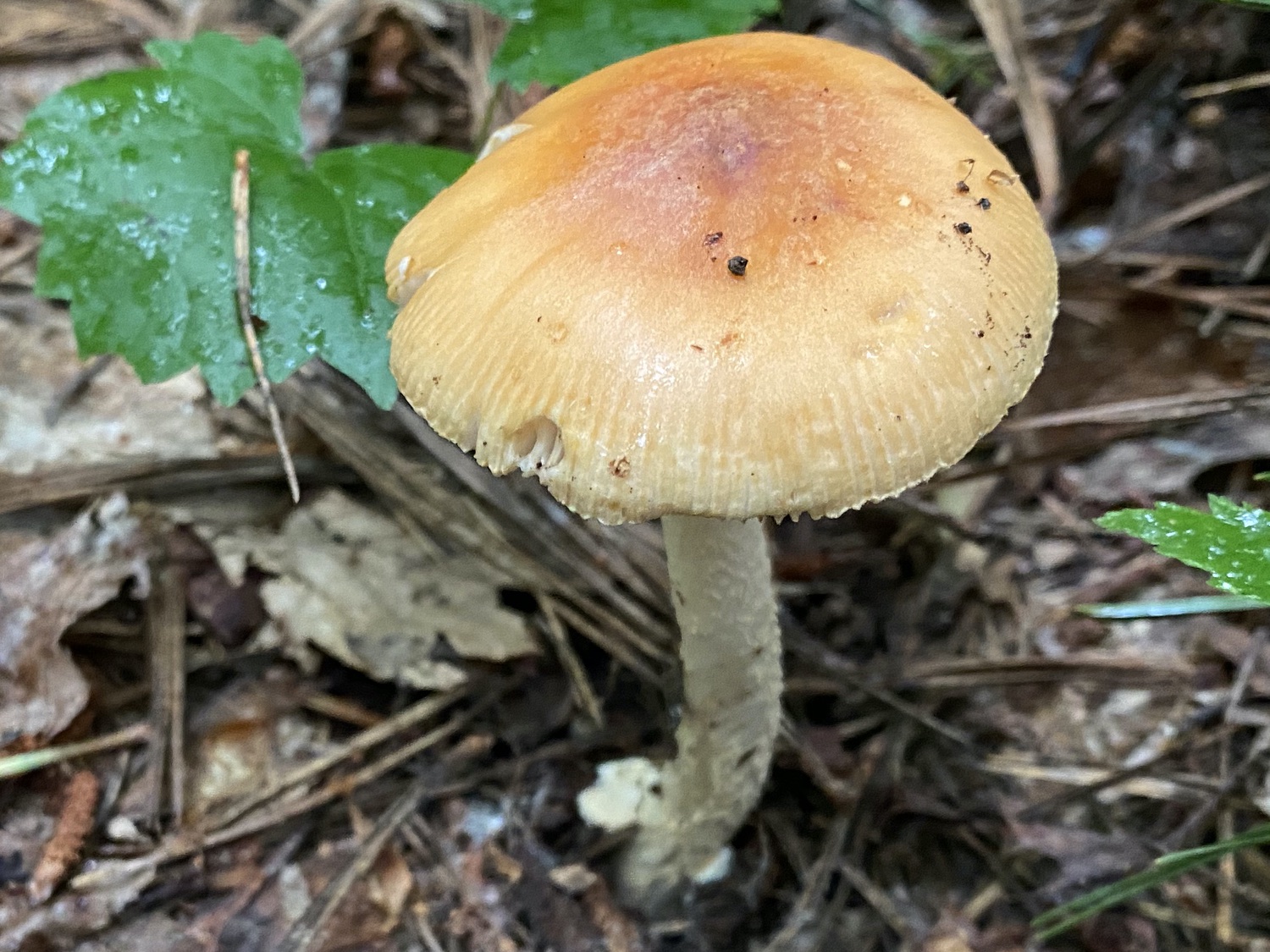
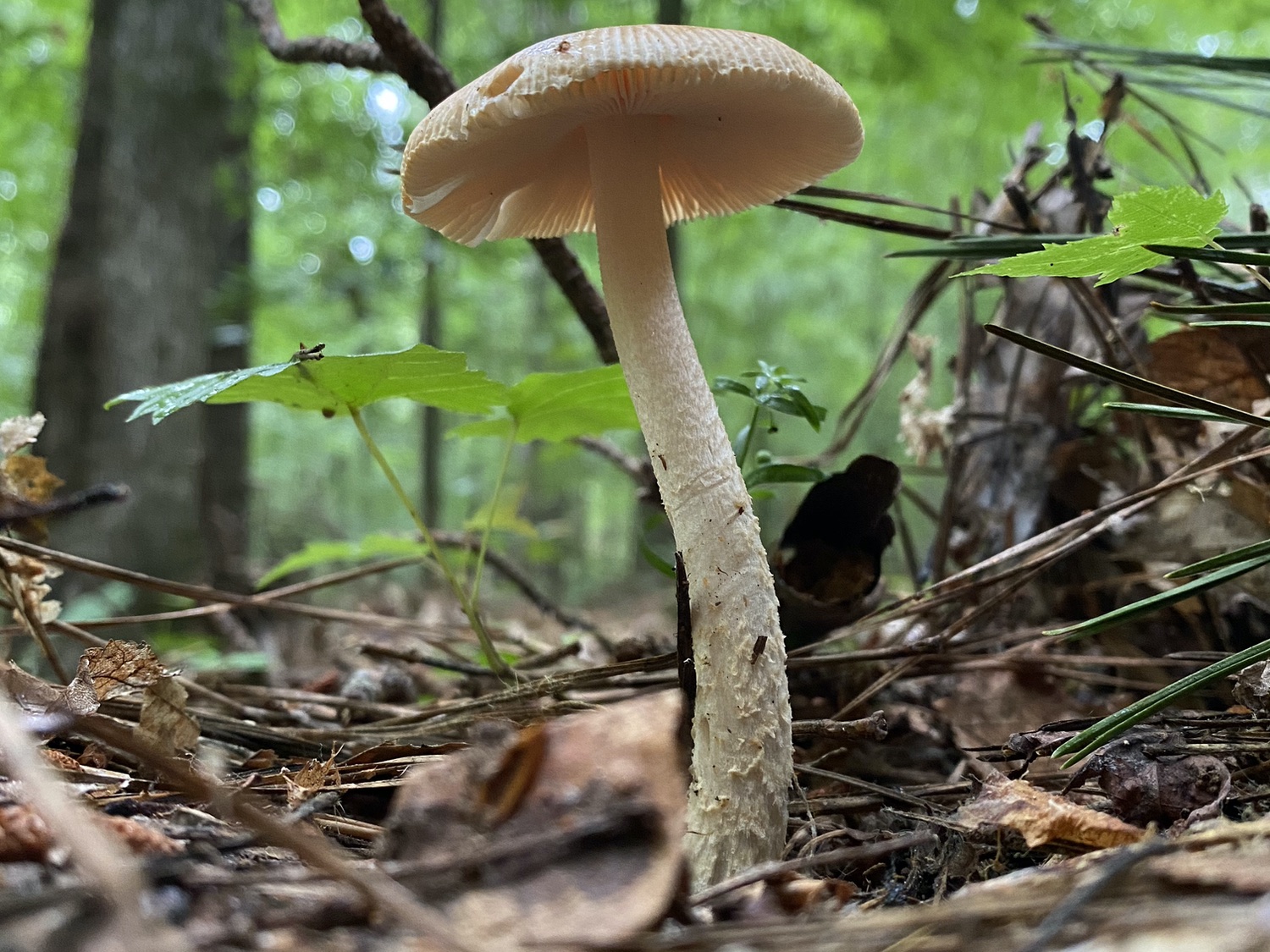
Tylopilus minor (no common name). This bolete species is not listed from our area by Woehrel and Light, but this sure does look like photos of it I have found online, such as at The Bolete Filter, who report it from Florida and Texas, but Alabama, Louisiana, Mississippi, or North Carolina. It might be the Violet-grey Bolete (Tylopilus plumbeoviolaceous), which occurs in the area and can have a tan cap when it ages, although this one has no trace of purple coloration. The stem is reticulate, best developed right at the cap, and it widens towards the base. A few days later, I found a second one like this, similar in all regards except that the cap was lighter in the center and darker towards the edges (although the same shade as this one). I found both in an oak-hickory hardwood forest in the UGA Botanical Gardens.
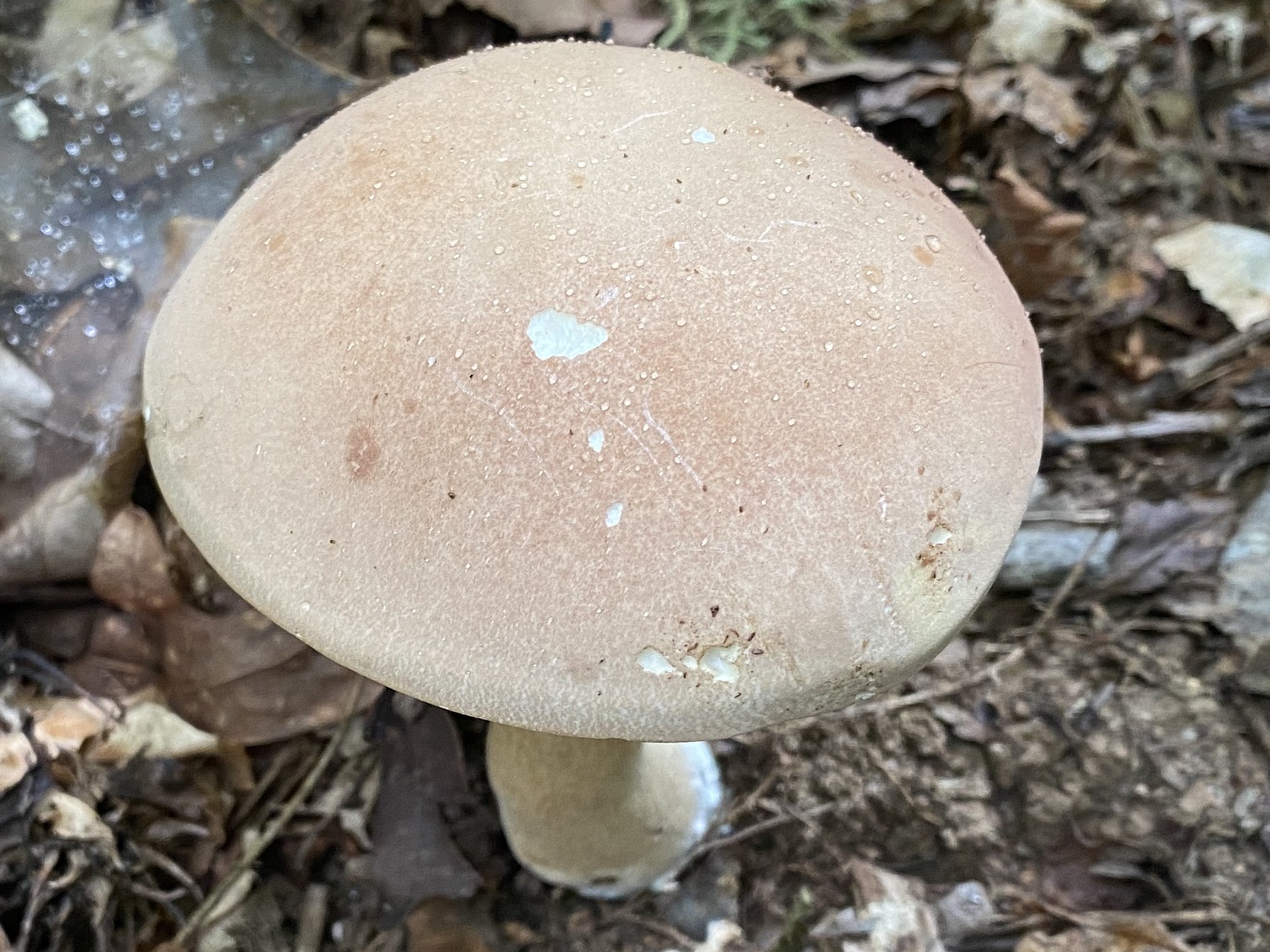
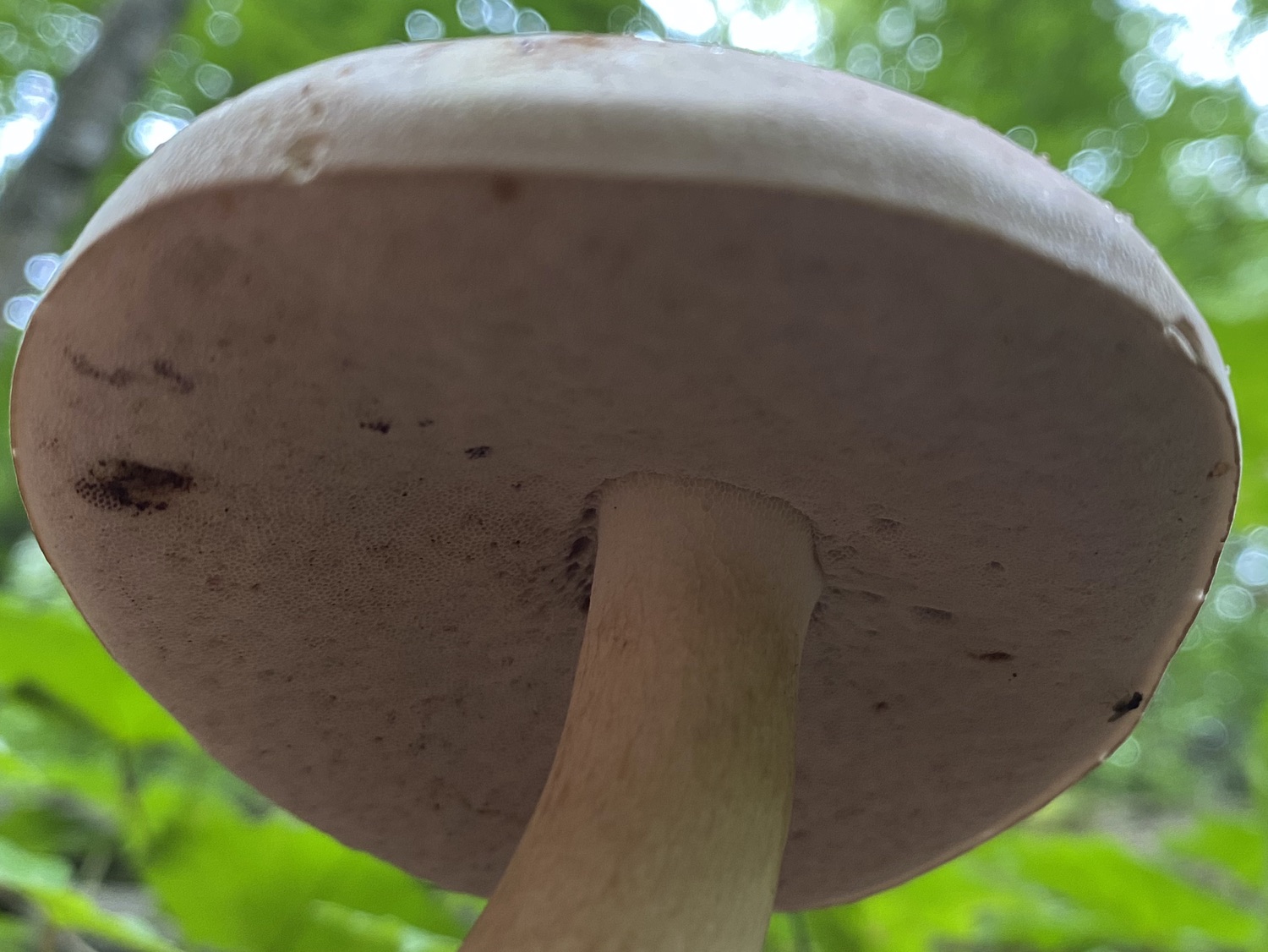
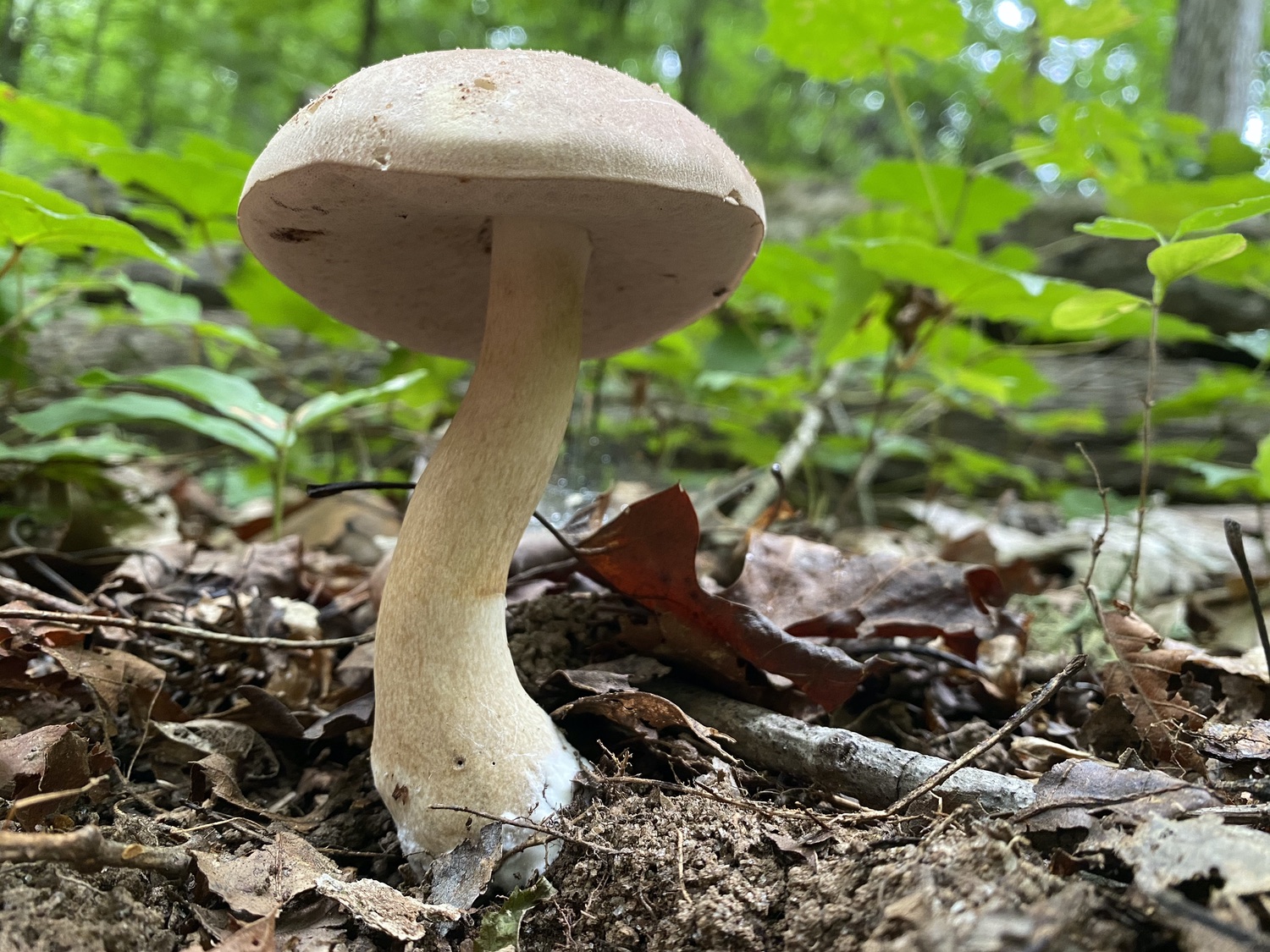
Ornate-stalked Bolete (Retiboletus ornatipes). The spongy lower surface marking this as a bolete is yellow, as is the top of the cap and the stipe (stem). The stipe is coarsely reticulated, giving it its name. I found this in an oak-hickory forest in the UGA Botanical Gardens.
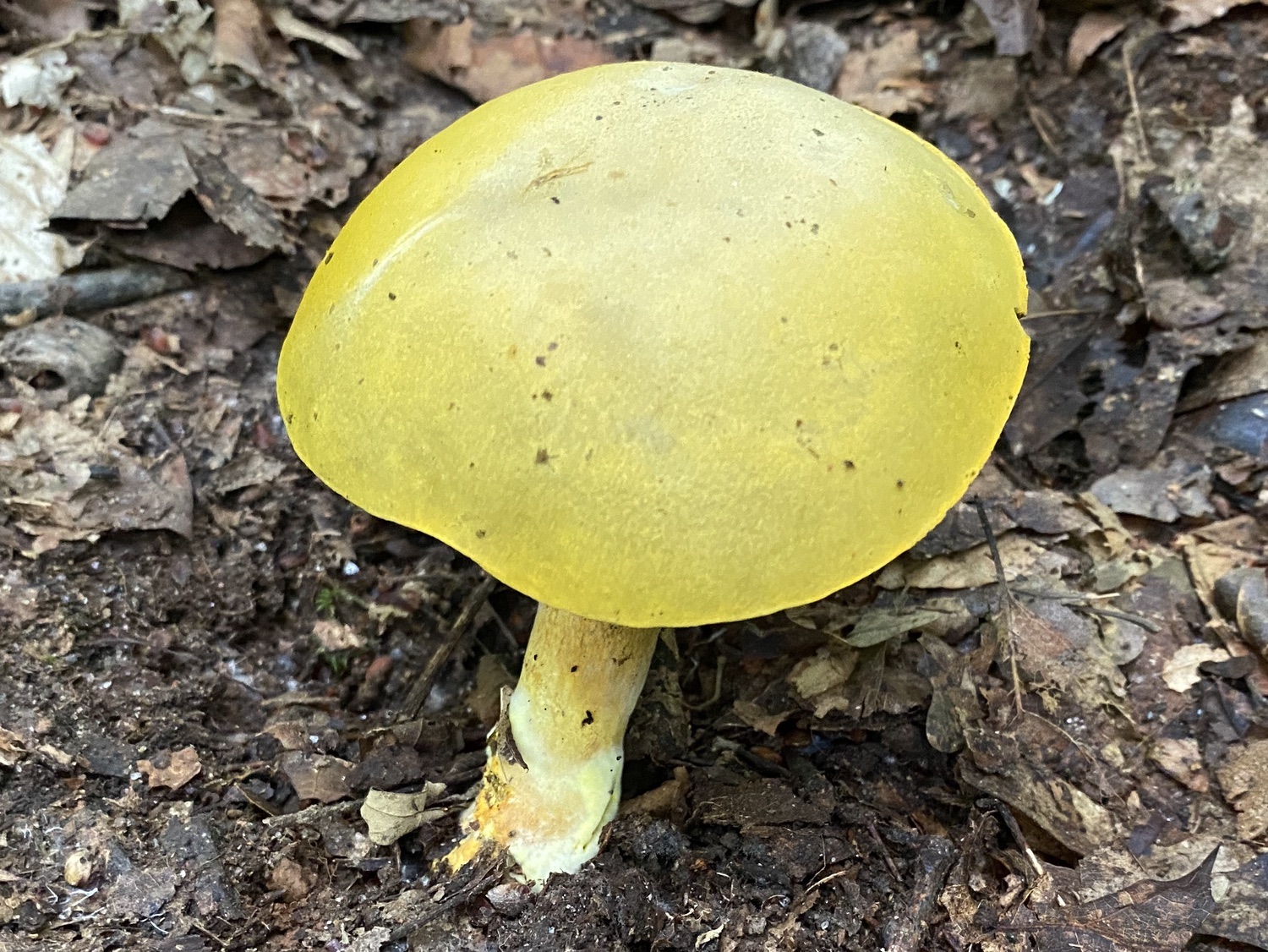
White Marasmius (Marasmiellus candidus). These tiny (½–¾") delicate white mushrooms formed clumps all over moister areas of the UGA Botanical Gardens following a couple days of rain. The stipe is white at the top, dark brown to black on the lower part. The gills are coarse and branching, and somewhat decurrent (extending down the stipe).
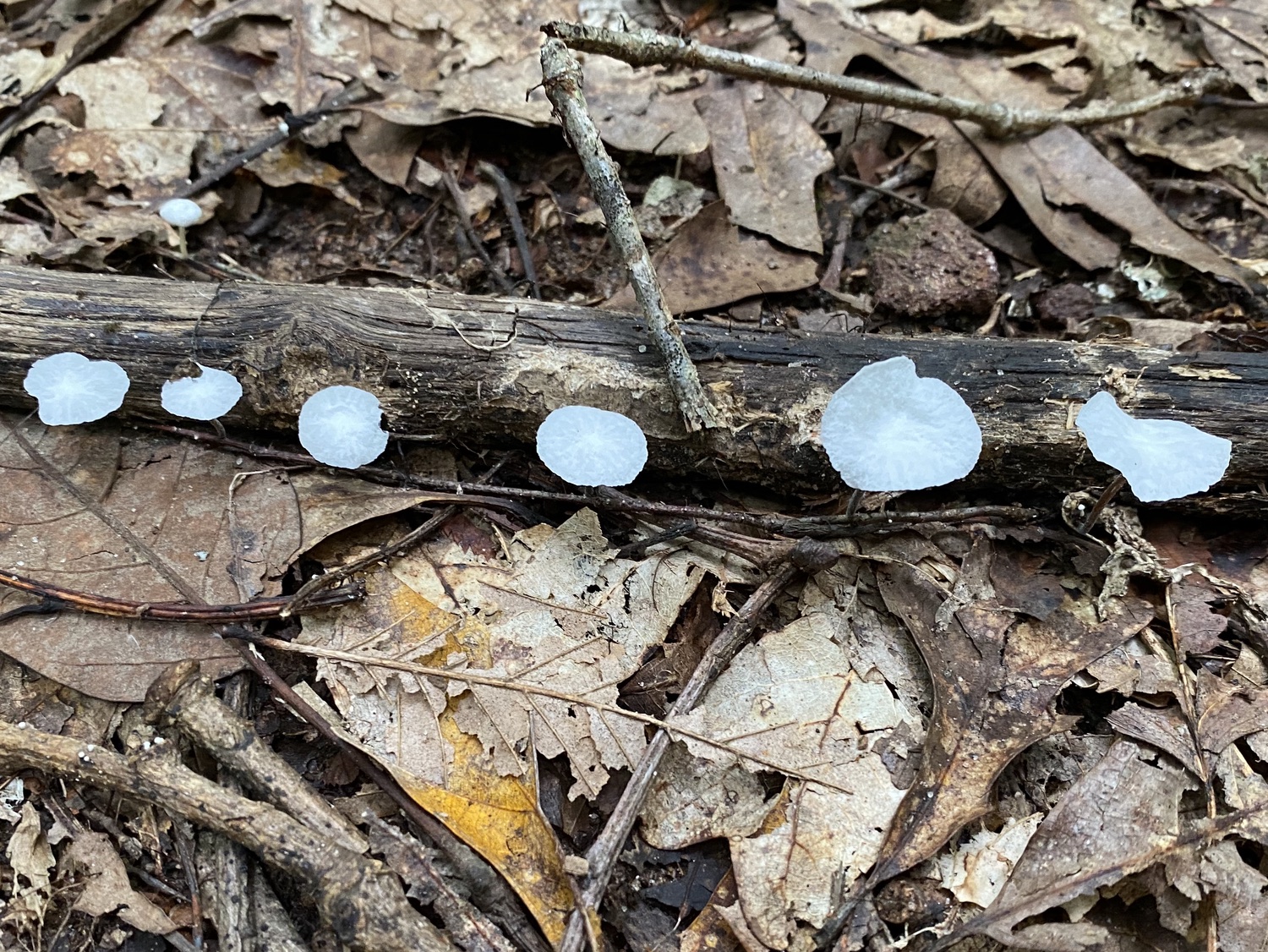
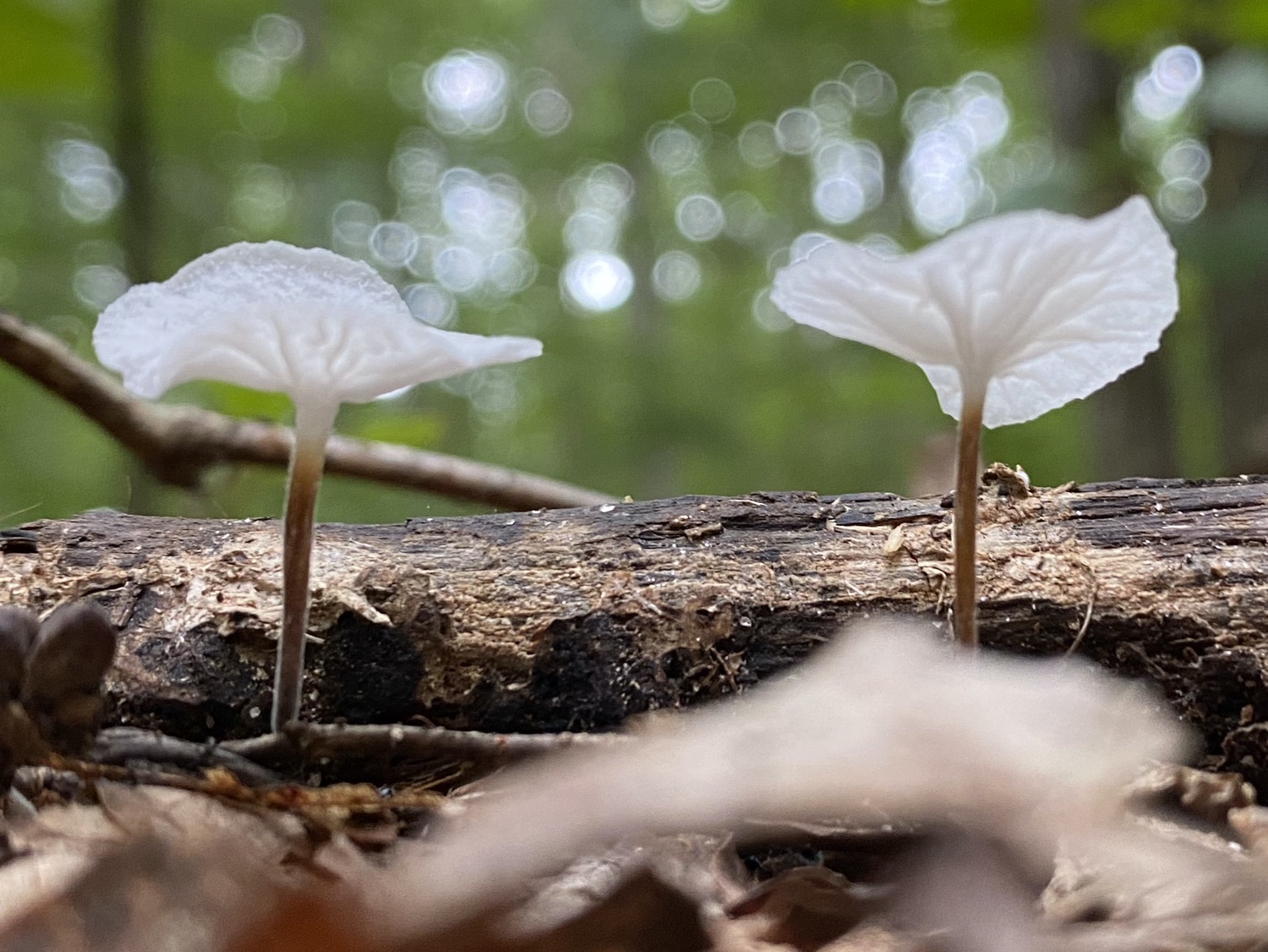
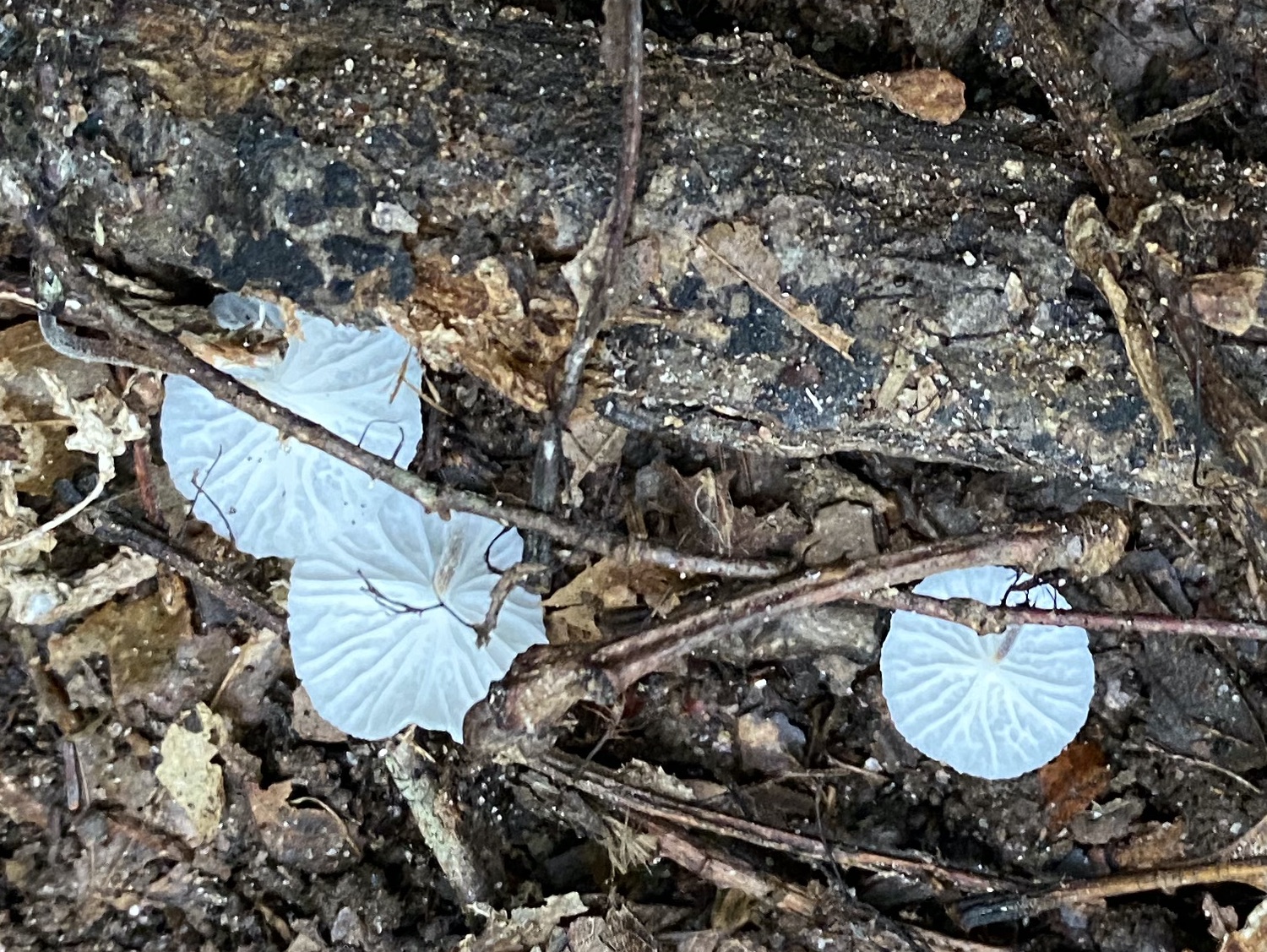
Stumpers
This might be one of the Russulas, but it is a little hard to tell because it has been munched on quite a bit. This is especially obvious in the side view. The cap is orangish red, and the well-developed but somewhat ragged-looking gills are white. The stem is short, thick, and orangish. I found this in a pine-oak forest on the White Trail in the UGA Botanical Gardens.
The Emetic Russulas (also called the Red-capped and White-stemmed Russulas, R. silvicola and R. nobilis) have a similar orange-red cap, but their stems are white, whereas this one has a pale orange blush. I did see one photo of R. nobilis online that had a stem with a blush like this, so I think that is the most likely name for this. The Red-capped and Rosy-stemmed Russulas (R. tenuiceps, R. pulchra, and R. cystidiosa) have a pink cap and pinkish stipe, unlike this one.
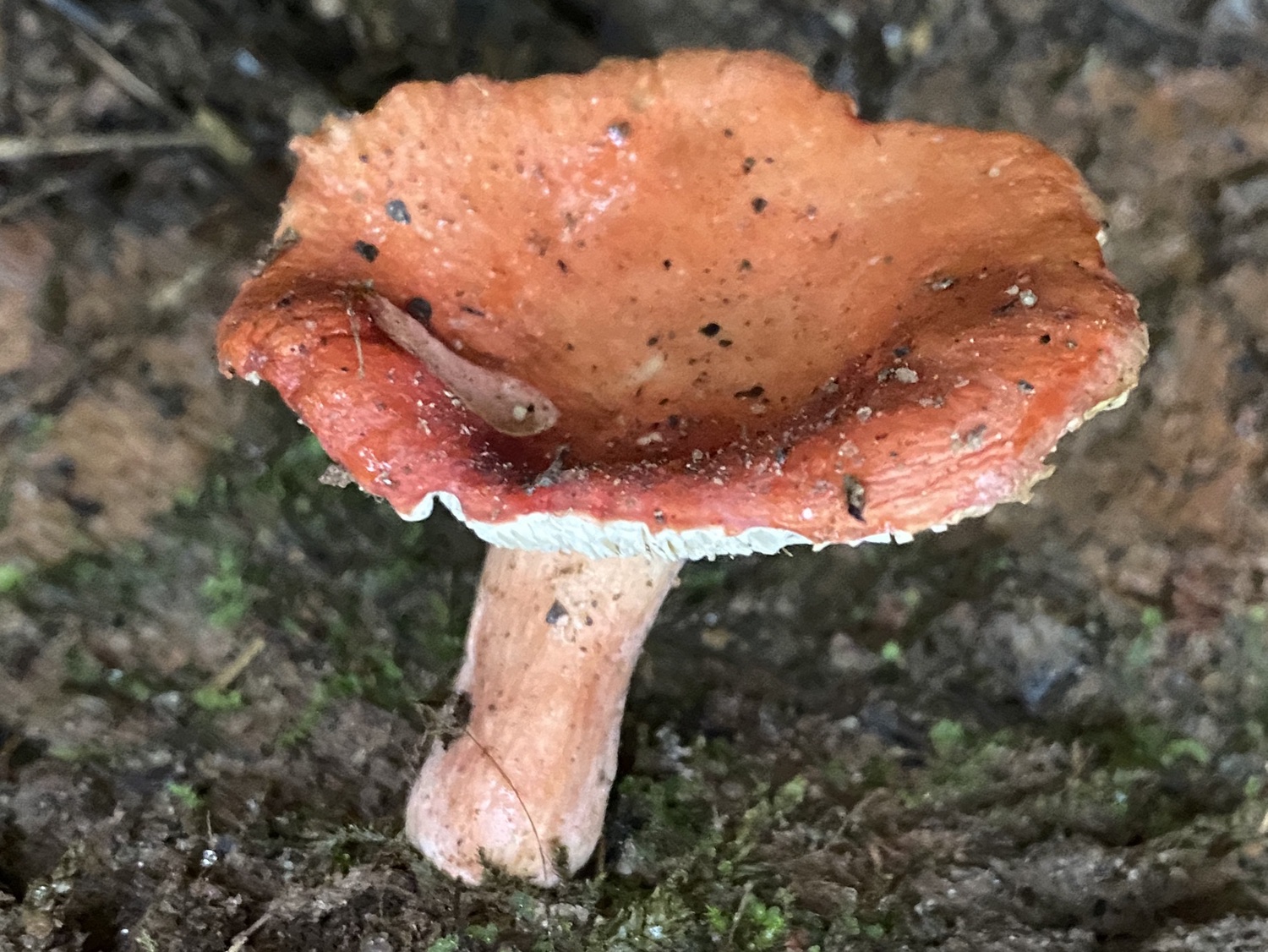
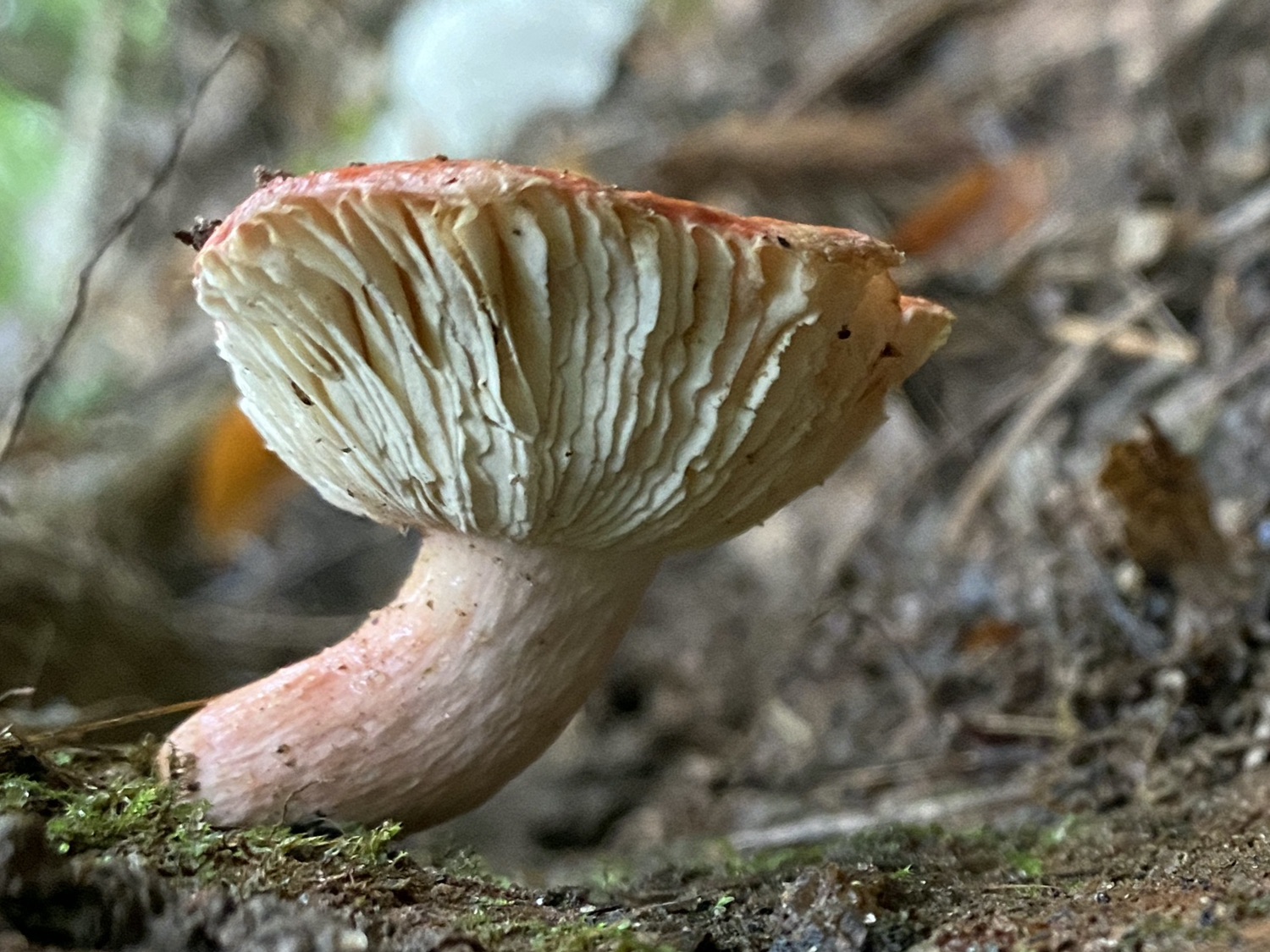
This is another one that looks like it would be obvious, but I’ve not been able to identify it. It has a tall white stem that is shaggy and narrows towards the top. The white cap seems disproportionately small, with white gills and a white veil just below. I found this in an oak-hickory forest in the UGA Botanical Gardens.

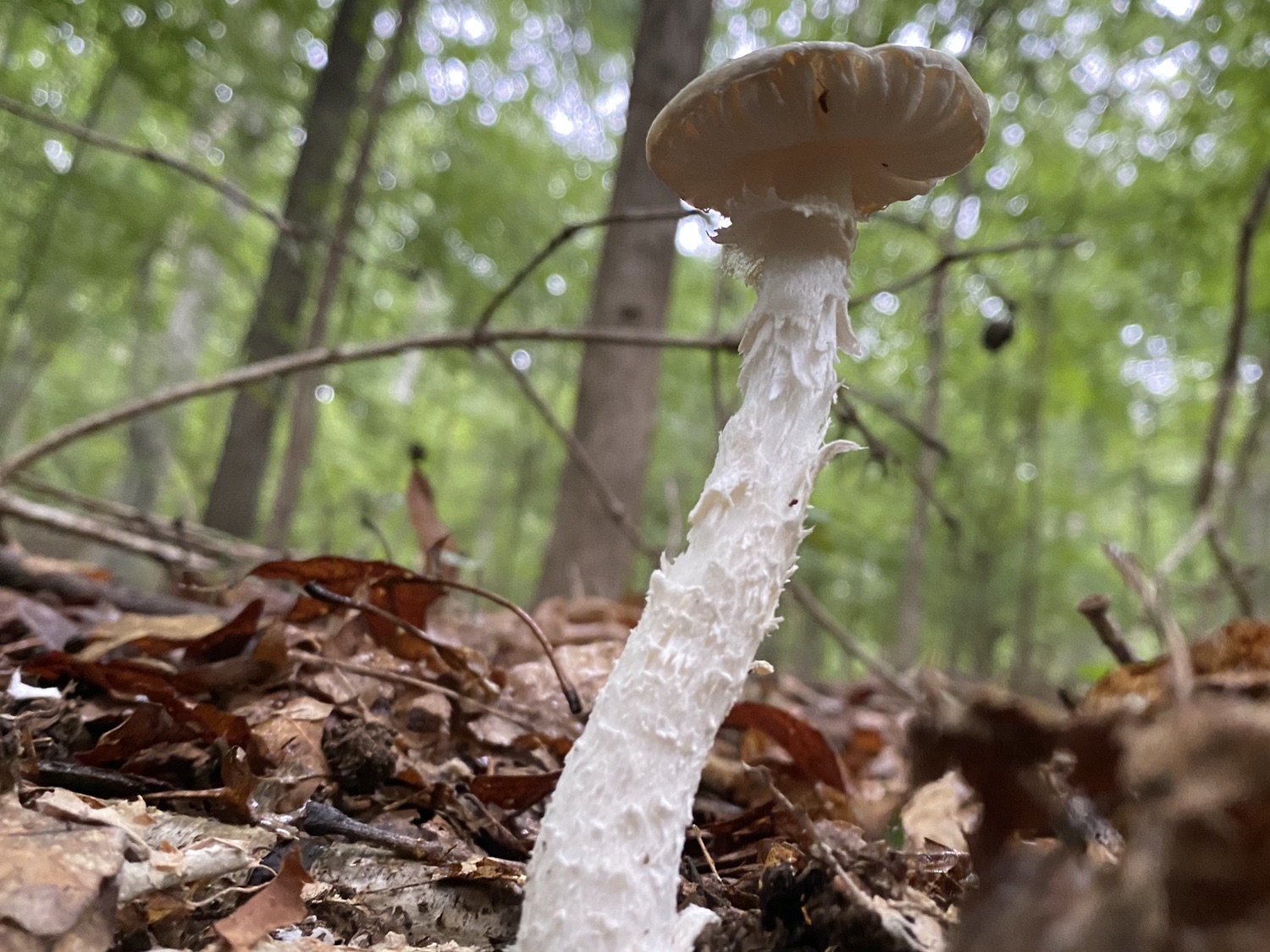
This bolete is dark, almost purplish, with a reticulate stipe that is almost black at the base.
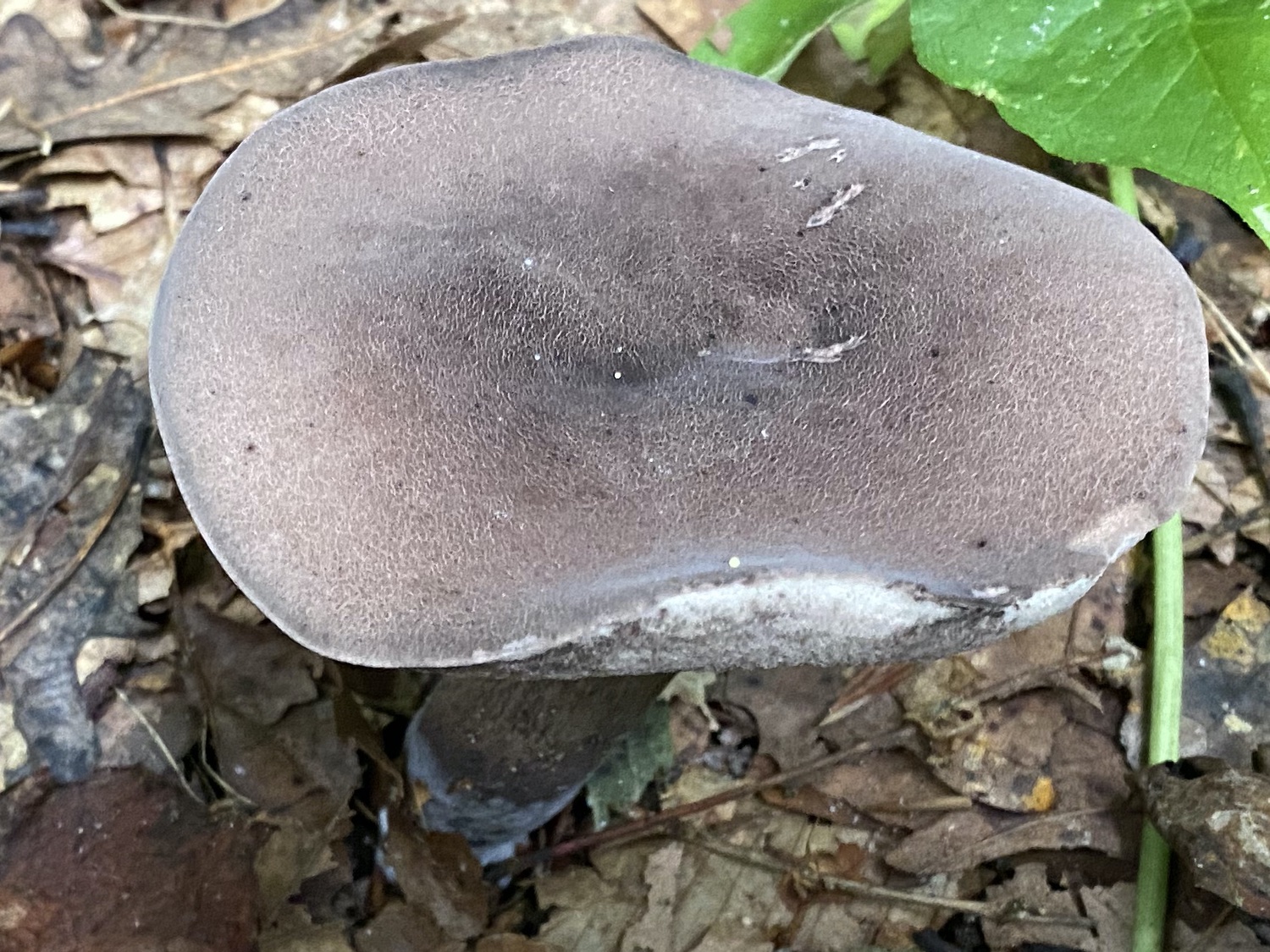

This bolete is white to light gray, almost ashen in its tinges of gray and black. The stipe is white at the top, black at the bottom. The underside has a wormy look rather than the typical pores in the other boletes, a texture called meruloid. I wonder if this has been damaged or is just old, making it hard to identify. There was a second one about 30' away, so I think is supposed to be what it looks like. It just isn’t in the book.
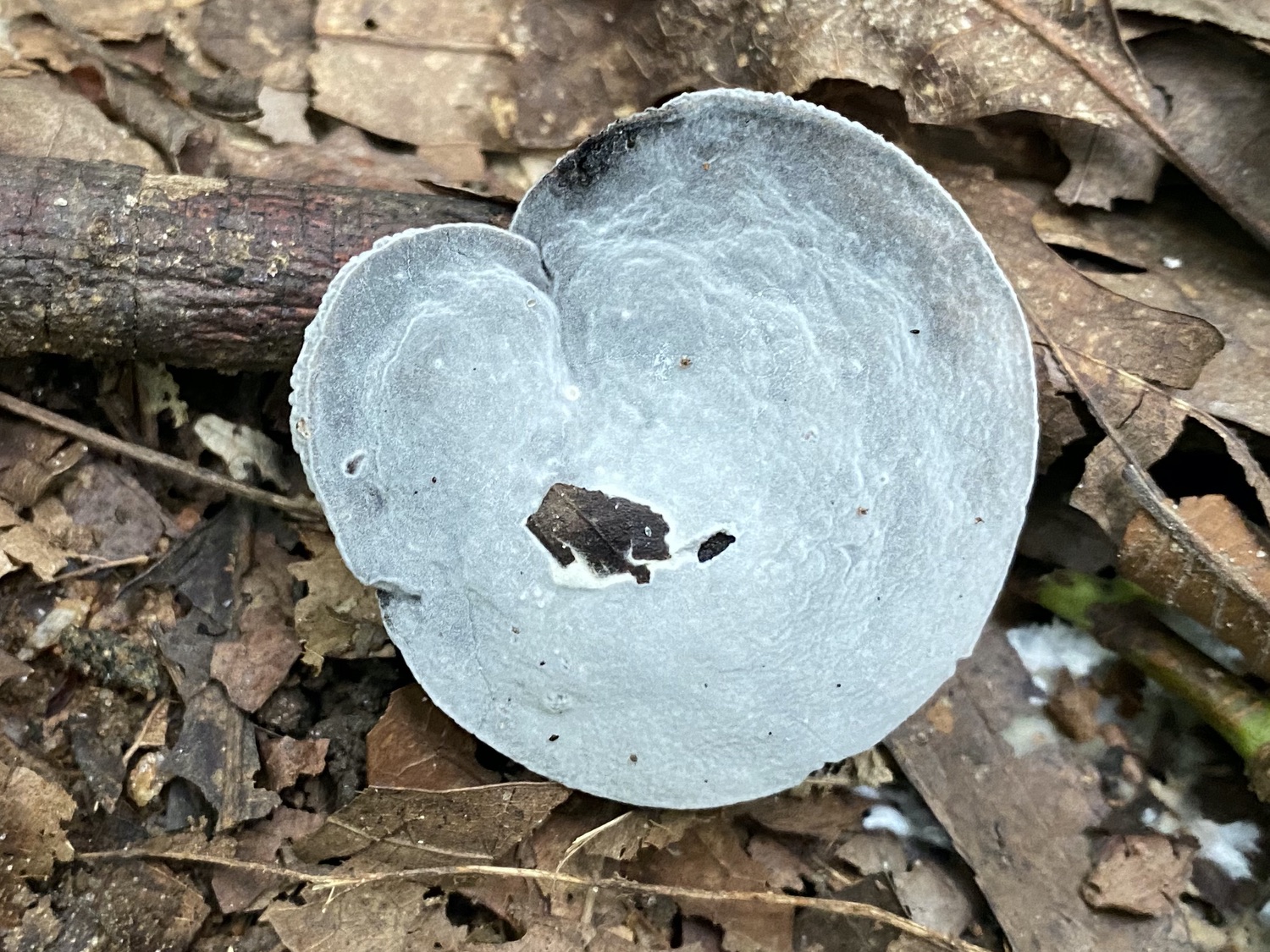
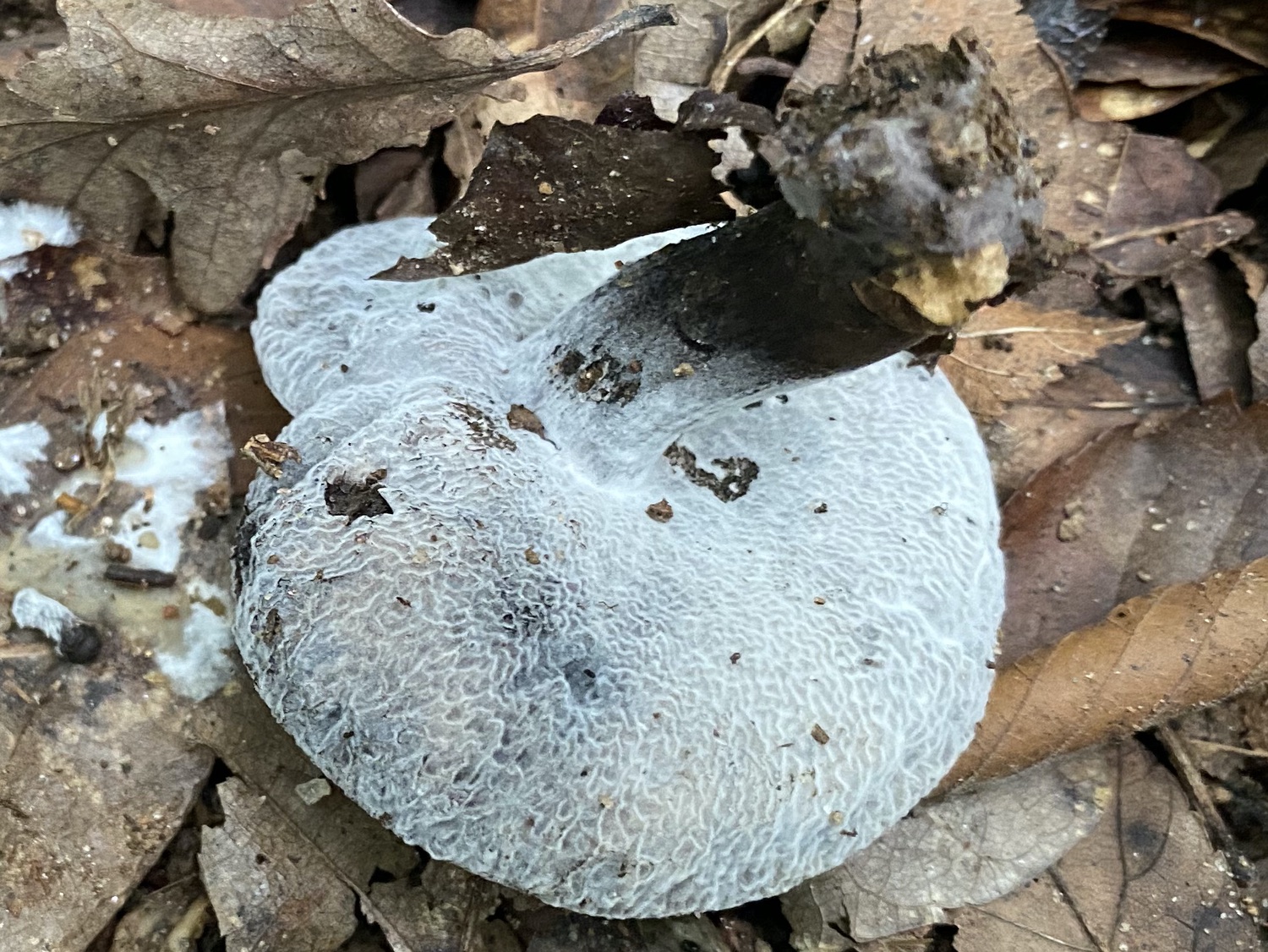
References
Woehrel, M. L., and W. H. Light. 2017. Mushrooms of the Georgia Piedmont & Southern Appalachians. University of Georgia Press, Athens.